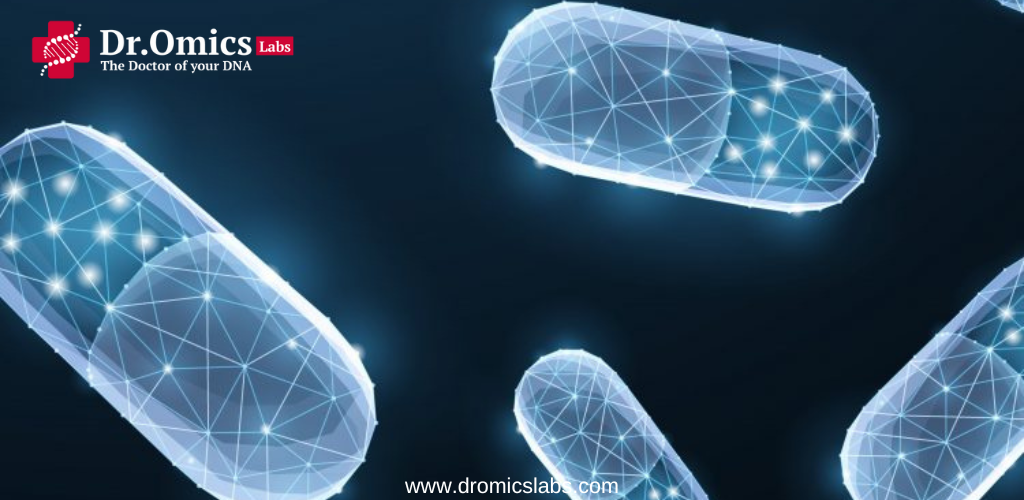Small molecule drugs are compounds that can modulate the activity of biological targets, such as proteins, enzymes, or receptors, and have the potential to treat various diseases. These are the most common type of therapeutics, accounting for about 90% of the approved drugs on the market. However, discovering and developing new small molecule drugs is a challenging and costly process, requiring many years of experimentation and optimization.
In this blog post, we will explore some of the ways that ML can help accelerate drug discovery by reducing the time and cost of experiments, improving the accuracy and efficiency of data analysis, and discovering novel and effective drugs.
ML for Drug Target Identification
Machine learning (ML) is a branch of artificial intelligence (AI) that uses algorithms or models to learn from data and make predictions or decisions. ML can be applied to various aspects of drug discovery, such as identifying drug targets, screening potential compounds, optimizing drug properties, predicting drug effects, and monitoring drug safety.
Drug target identification is the process of finding the molecular structure in the body where the drug would act, such as a protein, an enzyme, or a receptor. Drug target identification is crucial for selecting the right disease to treat and designing the appropriate drug molecule.
ML can help identify new drug targets by analyzing large and complex datasets, such as genomic, proteomic, transcriptomic, and metabolomic data, and finding patterns and associations that are not easily detected by human experts. For example, BenevolentAI, a company that uses AI for drug target identification, has discovered a new target for idiopathic pulmonary fibrosis, a rare and fatal lung disease, by using ML to integrate and interpret multiple data sources.
ML for Compound Screening
Compound screening is the process of testing a large number of chemical compounds for their ability to interact with the drug target and modulate its activity. Compound screening is essential for finding the initial hits that can be further optimized into drug candidates.
ML can help screen compounds faster and cheaper by using virtual screening methods, which predict the binding affinity and activity of compounds based on their chemical structure and properties, without the need for physical testing. For example, Atomwise, a company that uses AI for compound screening, has developed a deep learning model that can screen over 16 billion compounds in a day and identify potent inhibitors for various targets, such as Ebola virus and multiple sclerosis.
ML for Drug Property Optimization
Drug property optimization is the process of improving the physicochemical and pharmacological properties of the drug candidates, such as solubility, stability, permeability, bioavailability, selectivity, efficacy, and safety. Drug property optimization is important for ensuring the drug’s optimal performance and minimizing its adverse effects.
ML can help optimize drug properties by using generative models, which can design new compounds with desired features and constraints, based on the existing data and knowledge. For example, Insilico Medicine, a company that uses AI for drug property optimization, has developed a generative model that can design novel molecules with specific properties and synthesize them in the laboratory within 21 days.
ML for Drug Effect Prediction
Drug effect prediction is the process of estimating the clinical outcomes and potential risks of the drug candidates, such as efficacy, toxicity, pharmacokinetics, pharmacodynamics, and drug-drug interactions. Drug effect prediction is vital for evaluating the drug’s suitability and safety for human use.
ML can help predict drug effects by using predictive models, which can infer the drug’s behavior and impact on the human body, based on the preclinical and clinical data and simulations. For example, Recursion Pharmaceuticals, a company that uses AI for drug effect prediction, has developed a predictive model that can analyze high-throughput cellular images and identify the drug’s mode of action, mechanism of toxicity, and potential indications.
Challenges and opportunities
ML has shown great promise and potential for accelerating and improving small molecule drug discovery. However, there are still some challenges and limitations that need to be addressed, such as:
- Data Quality and Availability: ML models encounter hurdles due to the noise, incompleteness, and proprietary nature of drug discovery data, necessitating improvements in reliability, standardization, and accessibility, along with methods for data cleaning, integration, and augmentation.
- Model Interpretability and Explainability: The opacity of ML models poses challenges in understanding and verifying predictions, leading to ethical and regulatory concerns, prompting the need for more transparent, interpretable models and robust methods for evaluation, validation, and verification.
- Human-Machine Collaboration: Bridging the gap between ML model capabilities and user expectations is crucial, emphasizing the importance of user-friendly, interactive models and methods that facilitate improved human-machine collaboration, coordination, and trust.
Despite these challenges, ML also offers many opportunities and directions for future research and development, such as:
- Integrating Multiple Modalities and Sources: ML presents an opportunity to enhance drug discovery by integrating diverse data types—molecular, clinical, and social—to achieve a more comprehensive understanding of diseases and potential drugs.
- Exploiting Synergy of Different ML Methods: By leveraging the strengths of various ML methods, including supervised, unsupervised, and others, drug discovery efforts can benefit from improved model performance and robustness.
- Exploring New Frontiers and Applications: ML opens avenues for addressing novel challenges in drug discovery, such as discovering new targets, mechanisms, and pathways, designing innovative modalities (biologics, nanomedicines), and tackling emerging needs like personalized medicine, rare diseases, and neglected diseases.
Also read – Power of Biological Data: The Role of Machine Learning in Bioinformatics
ML is a powerful and versatile tool that can accelerate and enhance small molecule drug discovery by enabling faster, cheaper, and smarter solutions. ML has been applied to various stages and aspects of the drug discovery pipeline, such as target identification, compound generation, property prediction, and multi-objective optimization, and has achieved remarkable results and milestones. However, ML also faces some challenges and limitations, such as data quality and availability, model interpretability and explainability, and human-machine collaboration, that need to be addressed and overcome. Moreover, ML also offers many opportunities and directions for future research and development, such as integrating multiple modalities and sources of information, exploiting the synergy and complementarity of different ML methods, and exploring new frontiers and applications of ML. ML is not a magic bullet, but a valuable ally, that can help to discover new and better small molecule drugs for the benefit of humanity. evelopers.




